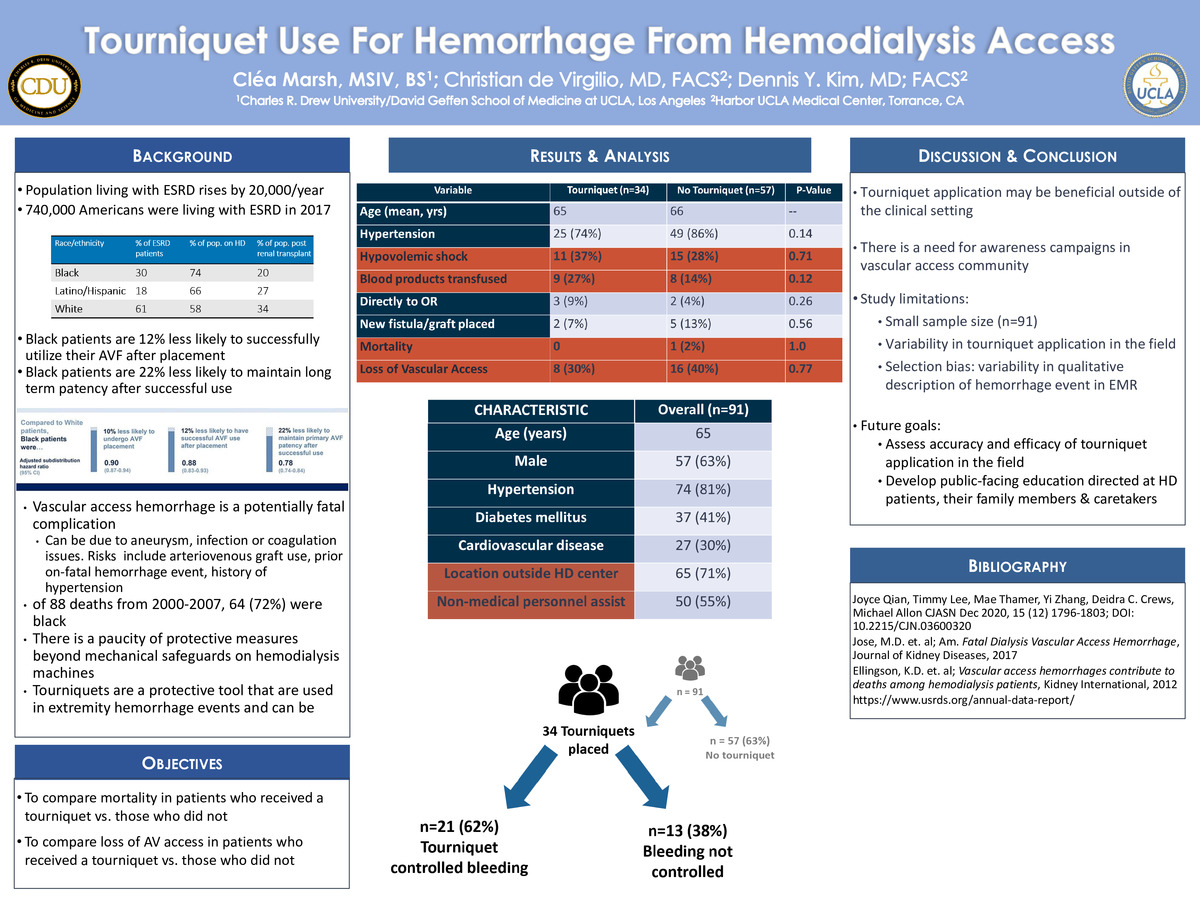-
Author
Clea Marsh -
Co-author
Janell Holloway, BS; Christian de Virgilio MD, FACS; Dennis Y. Kim MD, FACS;
-
Title
Tourniquet Use for Hemorrhage from Hemodialysis Access: Analysis of Outcomes
-
Abstract
Background: Black and Latino patients with end stage renal disease (ESRD) are less likely to undergo arteriovenous fistula/graft (AVF/AVG) placement and more likely to experience complications resulting in loss of access (LOA). Non-traumatic arteriovenous hemorrhage is an uncommon yet potentially fatal complication that can also result in LOA. Though optimal methods of bleeding control have yet to be defined, national campaigns such as Stop the Bleed have increased public awareness of tourniquet use for traumatic extremity hemorrhage control and can serve as an initiative directed at ESRD patients and their caretakers.
Objective: We aimed to describe the use of tourniquets in hemodialysis access hemorrhage events and examine their effect on outcomes in patients who received care at our county facility.
Methods: We performed a 5-year retrospective cohort analysis of adult patients presenting to our Level 1 trauma center with vascular access bleeding. Variables analyzed were demographics, type and location of access, admission vital signs, method of definitive hemorrhage control, transfusion requirements, mortality and loss of access. Patients who had tourniquets placed were compared to those who did not.
Results: Of 91 patients (mean age 65 years), hemorrhage occurred outside the dialysis center in 71%. Tourniquets were placed in 34 (37%), of which 62% successfully controlled the bleeding. In 50 patients (55%), non-medical personnel made the initial attempt at bleeding control. Mortality was 3%, and loss of access occurred in 23%. There was no significant difference between the tourniquet and non-tourniquet groups with respect to mortality or loss of access (p=NS).Conclusion: Vascular access hemorrhage occurs more commonly in non-healthcare settings and initial attempts at bleeding control are often dependent on non-medical personnel. Although mortality is low, nearly ¼ lose vascular access. Prospective studies should prioritize patient education on safe and effective tourniquet placement in vascular access hemorrhage events.
-
College
UUC
-
Zoom
https://ucla.zoom.us/j/99060654963?pwd=cE1WbkZtN09JVjNvUDZPOW1FWUhPQT09
-
PDF

